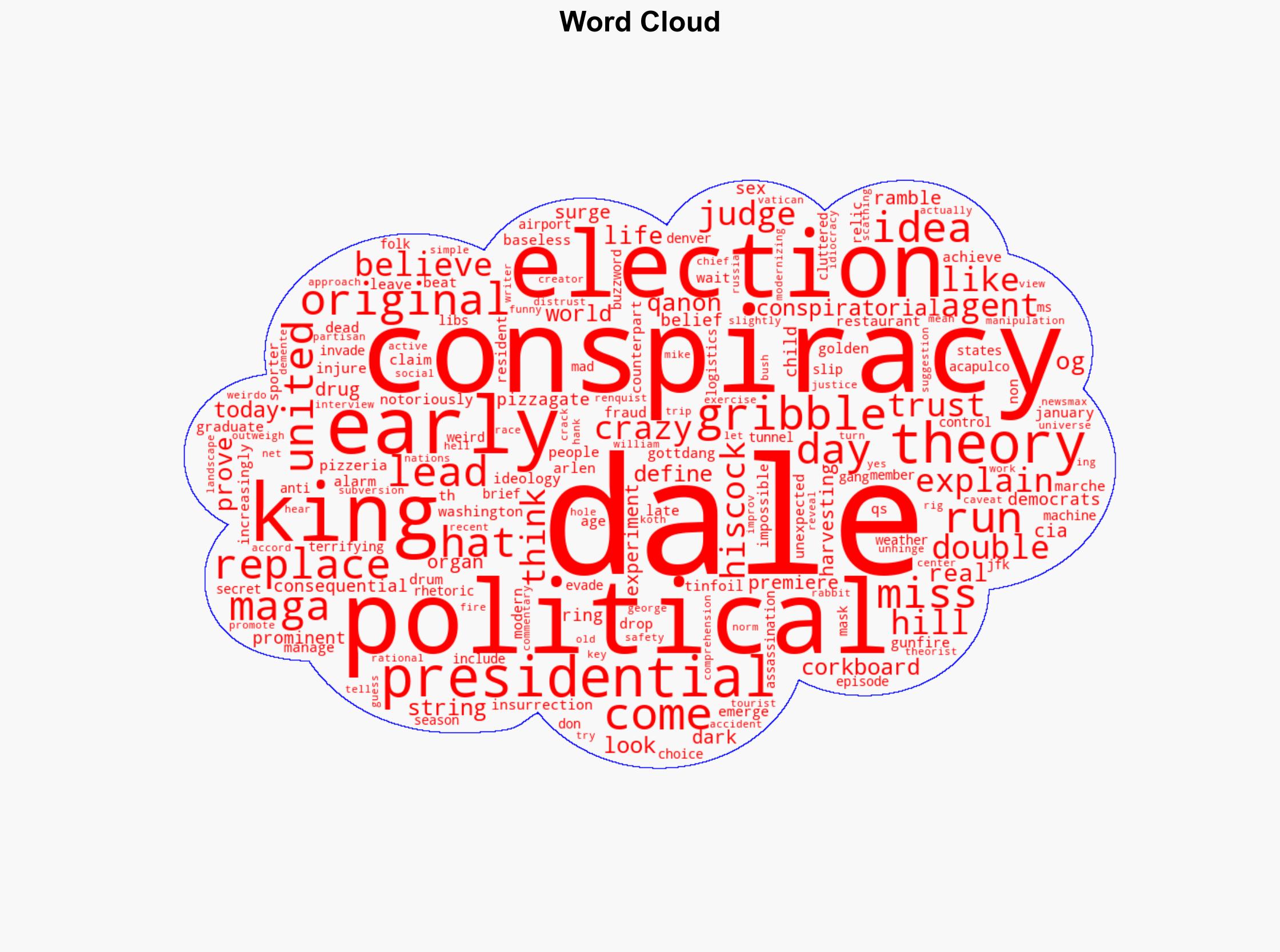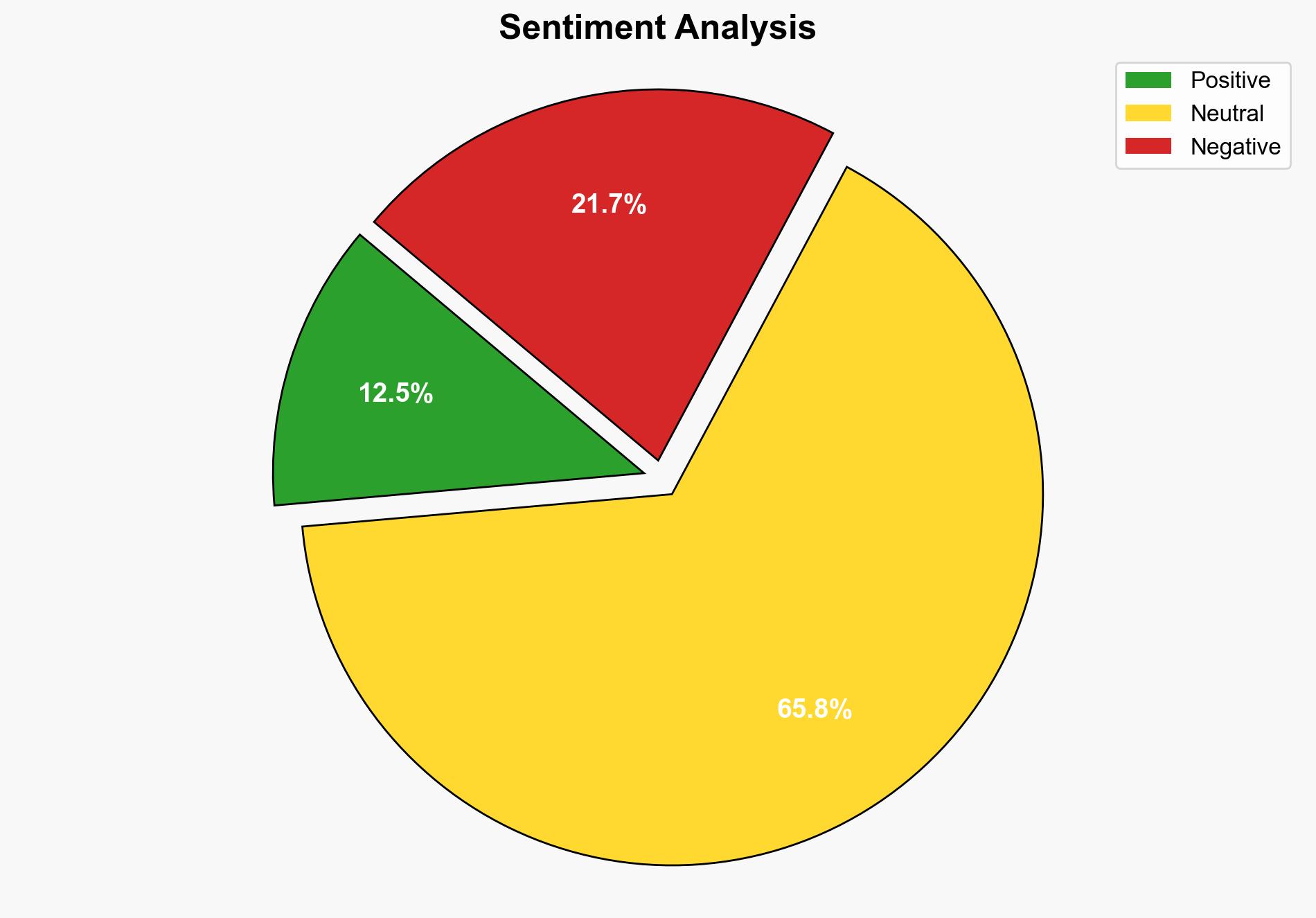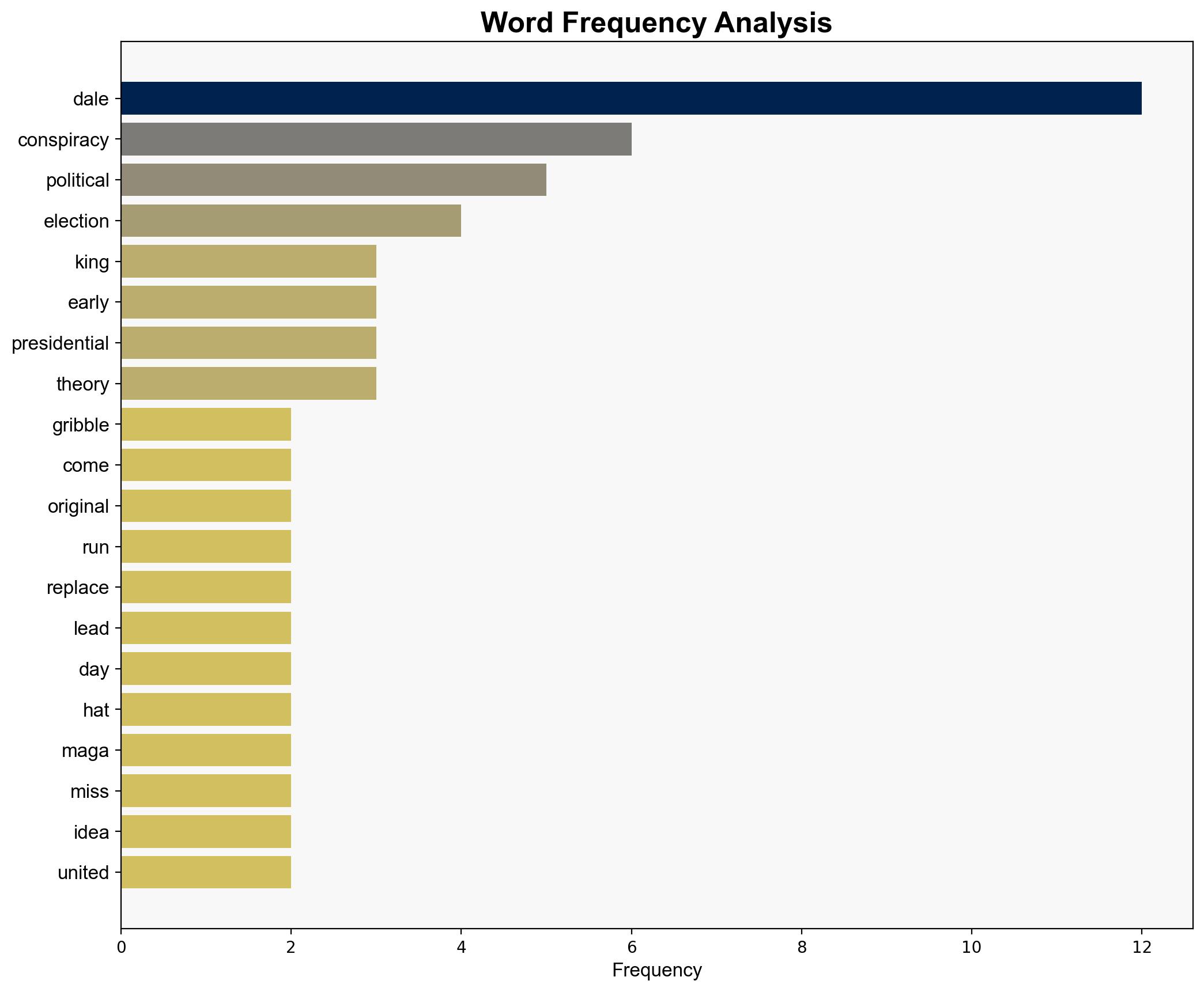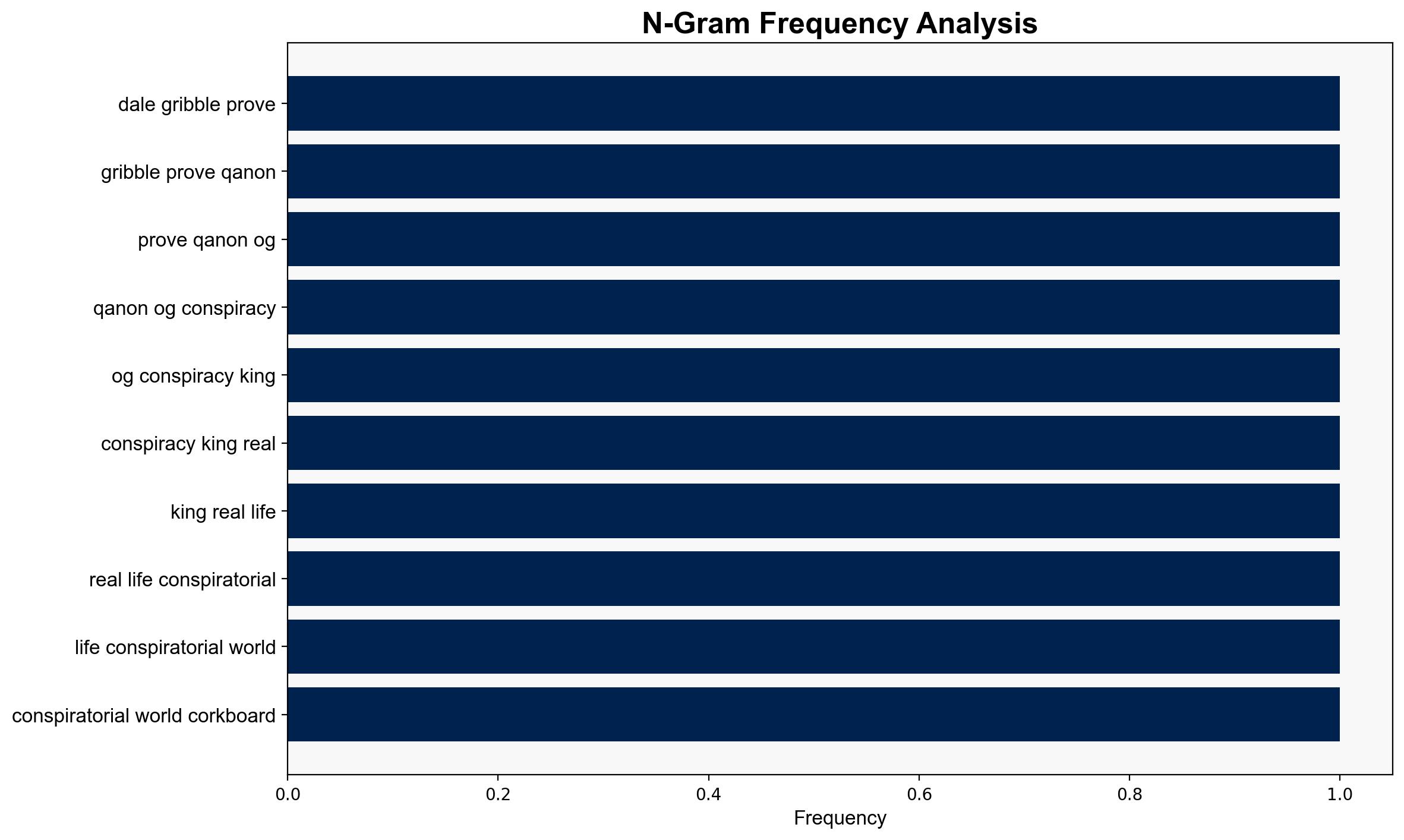Dale Gribble Proves That QAnon Has Nothing on the OG Conspiracy King – Cracked.com
Published on: 2025-08-11
Intelligence Report: Dale Gribble Proves That QAnon Has Nothing on the OG Conspiracy King – Cracked.com
1. BLUF (Bottom Line Up Front)
The analysis suggests that Dale Gribble’s portrayal as a conspiracy theorist in “King of the Hill” serves as a satirical commentary on the evolution of conspiracy theories from harmless eccentricity to potentially dangerous ideologies. The most supported hypothesis is that the character reflects a critique of modern conspiracy movements, highlighting the shift in public perception and the potential societal risks. Confidence level: Moderate. Recommended action: Monitor the influence of media portrayals on public beliefs and assess their impact on societal trust and cohesion.
2. Competing Hypotheses
1. **Hypothesis A**: Dale Gribble’s character is a satirical representation of conspiracy theorists, illustrating the benign nature of past conspiracy beliefs compared to modern, more dangerous ideologies like QAnon.
2. **Hypothesis B**: The character is an exaggerated critique of conspiracy theorists, suggesting that all conspiracy beliefs, regardless of perceived harmlessness, contribute to a culture of distrust and misinformation.
Using ACH 2.0, Hypothesis A is better supported by the evidence. The article contrasts Gribble’s eccentric theories with the more harmful and politically charged conspiracies of today, indicating a shift in the nature and impact of such beliefs.
3. Key Assumptions and Red Flags
– **Assumptions**: The analysis assumes that media portrayals significantly influence public perception of conspiracy theories. It also presumes that past conspiracy theories were less harmful.
– **Red Flags**: The article may oversimplify the transition from benign to harmful conspiracies, ignoring the historical impact of past theories. There is a potential bias in portraying modern conspiracy theories as uniformly dangerous.
4. Implications and Strategic Risks
The portrayal of conspiracy theories in media can influence public perception and potentially exacerbate societal divisions. If unchecked, this could lead to increased polarization and erosion of trust in institutions. The evolution of conspiracy theories poses risks in terms of misinformation, radicalization, and potential for violence, as seen in events like the January 6th insurrection.
5. Recommendations and Outlook
- Monitor media portrayals of conspiracy theories and assess their impact on public beliefs and behaviors.
- Engage in public education campaigns to promote critical thinking and media literacy.
- Scenario-based projections:
- Best: Increased media literacy leads to a decline in the influence of harmful conspiracy theories.
- Worst: Continued spread of misinformation exacerbates societal divisions and leads to further violence.
- Most Likely: Mixed outcomes with some reduction in influence but persistent pockets of radical belief.
6. Key Individuals and Entities
– Dale Gribble (fictional character)
– Norm Hiscock (writer)
– Mike Judge (creator)
7. Thematic Tags
national security threats, cybersecurity, counter-terrorism, regional focus




